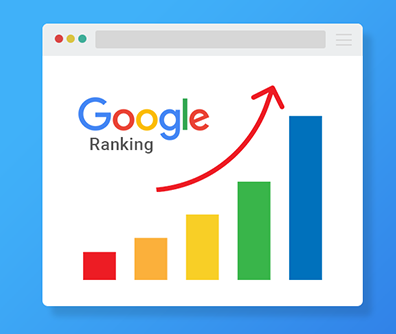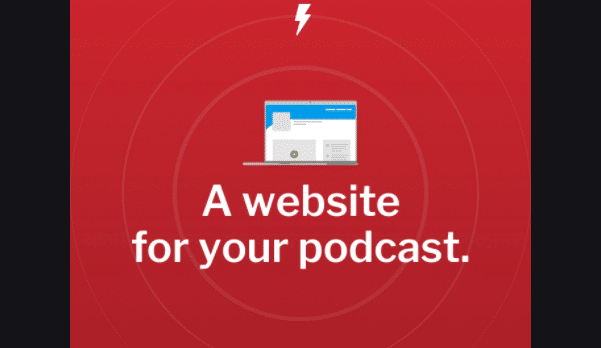Top 10 Most Important Google Ranking Factors (Not Just SEO); Do people typically log off of Facebook or YouTube after 30 seconds? Google is aware that some users spend hours on it. What?! Okay, gentlemen, we all know that Google is the world’s most intelligent search engine.
In reality, one of the biggest artificial intelligence machines in the world is the Google search platform algorithm and the way it crawls and connects everything. It searches new websites and links. It is able to comprehend how relevant the stuff it finds is. It can identify plagiarism from any other online source. It is aware of all locations where a person is mentioned. A company is listed.
Based on each of these several criteria, it can rank each of these items. Google is so intelligent that it can recognize when a website tries to trick Google into giving it a better ranking. After that, Google penalizes those websites for attempting to leverage its algorithm in an unnatural way. It’s really amazing, isn’t it?
Google Ranking Factors – Top 10 Most important
In actuality, no one is fully aware of Google’s algorithm. The algorithm used by Google is totally proprietary and it changes frequently.
Google has a very small amount of information about the operation of its secret ranking factors. Over 200 ranking variables have, however, all been verified in some form.
Let me tell you, researching and studying each of these ranking elements would be a waste of your time.
1. Relevance
Number one, Relevance. Some people will disagree with me, but search engines are definitely headed in the direction of relevance in all aspects that it can be applied. For example, is your website and content relevant to what people are searching for?
Is your content structured to keep more relevant content together? Are your incoming links coming from websites that are relevant to yours? Are people actually reading and looking at your content when they find it? You have to think about the purpose of a search engine.
The purpose of a search engine is to help its users find what they’re looking for. Google is constantly trying to find ways to get rid of junk. Irrelevant websites are disappearing from Google all the time now, so keep that in mind and keep your content relevant to what users are looking for and relevant to the topics of your website.
2. BackLinks or Quality Links
Number two, BackLinks or Quality Links from Other Websites Many people new to the world of online business struggle with the concept of the backlink or what the term means. Then when someone finally understands backlinks, they find that this is one of the most difficult things to deal with, and then they struggle building backlinks. In fact, backlinks are the primary reason that most good websites never rank.
It’s also the reason many big websites have crashed and burned into nothing. See, there’s good and bad backlinks. Good back links will boost your website, and bad backlinks will really hurt your website or even kill it. You shouldn’t just build backlinks anywhere you can get them. But wait, what are backlinks? Here is an example of a link.
It uses the ‘A’ tag in a code called HTML. Depending on a website design, a link will typically be a different color than the other text and will be clickable.
The text inside of the link is called anchor text. Images can also have a link. Internal links are links that go from one page to another within the same website or domain. These are also very important to use correctly. Proper internal linking is absolutely essential for your website.
Links that come from other websites to yours are called inbound links or backlinks, and that’s what a back link is. Now let’s move on.
3. dwell time
Number three. The number three Ranking factor we’ll be looking at is dwell time. Now, dwell time is a much newer addition to the importance of SEO. While the actual definition of dwell time might be kind of complicated, we can simply define it as how long someone spends on your content before they leave.
If someone sees your result in the search engine, clicks on it, spends 3 seconds on it, then goes back to the search. That is called a bounce. If a person spend 30 seconds on it, that’s poor or low dwell time. You want your dwell time to be as high as possible.
Think about Facebook or YouTube. When someone gets on Facebook or YouTube, do they usually leave within 30 seconds? Some people stay on it for hours, and Google knows this.
There are many different ways to increase dwell time, which we will talk about in depth later on.
4. Clickthrough Rate or CTR
Number four, a Ranking factor we’ll be looking at is clickthrough Rate or CTR. Clickthrough rate is actually a very simple concept. For many years, advertising companies, marketers and email campaigns have used clickthrough rate to help refine and improve their strategies.
So someone searches for something and your result appears that’s an impression. If they don’t click on it, then your clickthrough rate goes down. If they do click on it, your clickthrough rate goes up. Simple, right? You see it, it’s an impression you click on it.
That’s a click through a click through rate of 5% is pretty good. Google uses clickthrough rate to help determine the appropriate rank. Let’s say you rank and the first position for a search phrase in position one at the very top of Google, but then no one ever clicks on your search result for that search phrase. Well, that doesn’t make any sense.
That means that your content either isn’t relevant or you haven’t optimized your content enough. And because of this, Google will decrease your rank and move someone else who is more relevant to the top.
5. Domain Authority or Domain Power
Number five, Domain Authority or Domain Power Call it what you want, but when your website becomes more of an authority on a specific topic, Google takes notice. The higher your domain authority, the easier it is to rank different pages on that domain.
Now, again, nobody knows exactly how this works for Google, but there are some companies out there that have created some similar algorithms to help give us some metrics on this. MOZ is a company that measures domain authority or DA for websites.
They also have page authority or PA for individual pages. Domain authority has a lot to do with backlinks from other websites. What the quality of those links are, how trusted the websites are that link to your pages, and how relevant the content is surrounding those links.
Domain authority is based almost entirely on your link profile and your content. High quality, relevant, optimized and helpful content is always good for domain authority.
6. Optimize website content
Number six, Optimize website content. You can have really high quality content, but if it’s not optimized, you won’t rank as high as your competitors.
Number seven, Website load Time as simple as this may sound, there is a lot of technical details that goes into your website load time. In fact, there is an abundance of different factors and tools that goes into optimizing your website load time.
There’s Time to First Byte, page size, number of requests to the server. Image optimization, lazy loading, server response. Even though there’s a lot to consider initially, it really all boils down to your web hosting.
If you have GoDaddy hosting, you’re probably already failing at this first step. Proper web hosting is one of the most important things to consider at the early stages of starting your website. Think about it. If your website takes 5 seconds to load, it makes for a poor user experience.
Also, studies show that 50% of mobile users will leave a page that takes more than 3 seconds to load before it even loads. So not only is it bad for Google to rank a website that gives a poor user experience, but it’s also bad for your business.
You don’t want to lose half of your customers before they even see your content. Plus, it drives your bounce rate through the roof. It kills your dwell time. It will kill your Google rankings.
7. HTTPS versus HTTP
Number eight, HTTPS versus HTTP. So in 2014, Google released a statement recommending all websites switch to HTTPS. What is that even? Well, it has to do with SSL, which is actually now TLS. What?! Way too technical… Well, again, it all comes down to your hosting provider. And if they can provide you with SSL encryption, go ahead, look something up.
You will see that the top websites are using HTTPS. Also, if you don’t have an SSL certificate, most web browsers, especially Chrome, will warn users that your website is not secure. So many web hosting companies do not provide free SSL.
There’s two web hosts that I use the most that are super fast and have free SSL. They also perform free website migrations if you switch to them from pretty much any other web host. I’m telling you. They are the only two web hosts I use anymore, and both of them are literally the best in the business.
You can take care of SSL as well as having a lightning fast website right now. With proper web hosting!
8. Mobile compatibility
Number nine. Mobile compatibility. Nowadays, over 50% of web traffic is through mobile devices. Google really likes to focus on user experience for their ranking. If your website is not mobile responsive and mobile friendly, you will not rank for mobile searches. That’s automatically half of your web traffic.
Google is starting to push this even further. If your website doesn’t meet modern standards, why would they rank you at all? All of the top websites are mobile compatible. Yours should be too. This used to be difficult, as you would have to develop a completely separate mobile version of your website, but now this is incredibly easy. Automatically make your website mobile compatible and looking fantastic by using a proper theme and page builder.
9. Domain age
Number ten, Domain age. It makes sense that Google is skeptical of new websites. It’s literally almost like Google penalizes you for the first six months. After that, if you have good content and you built things the right way, your ranking will start to increase.
Honestly. After you start, you can see some serious and significant traffic and rankings after just twelve months. Personally, I have ranked a few websites with brand new domains to the top positions on Google in as little as two months.
It is absolutely possible to rank up there with the big websites that have been around for 15 years. An aged domain can help, but it’s not required.
If you perform well on your other ranking factors, Google will care more about fresh content, relevant content, and current information than how old your website is.
The first six items in this are all about your content. You focus on these as you build your website or online business. But look at these three items. It’s amazing to me how many people with great websites can never really rank just because they picked the wrong hosting.
Five-second page load times are bad. 9 seconds is just unrankable. You can get a handle on these right now with proper web hosting and a solid WordPress theme. If you have any questions or suggestions, please leave them in the comments below. Check out my full course on how to start an online business



